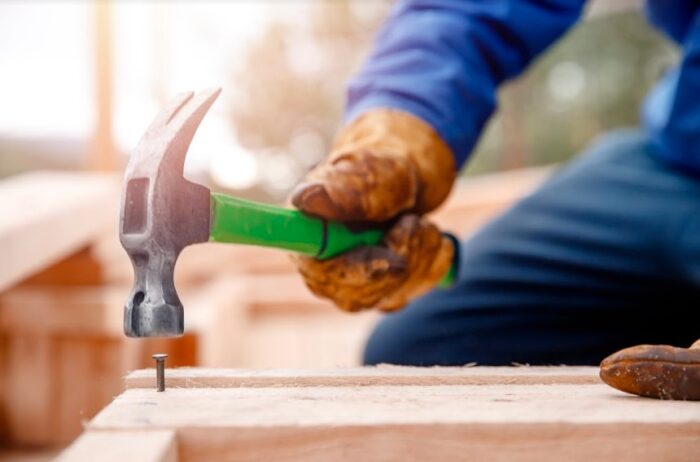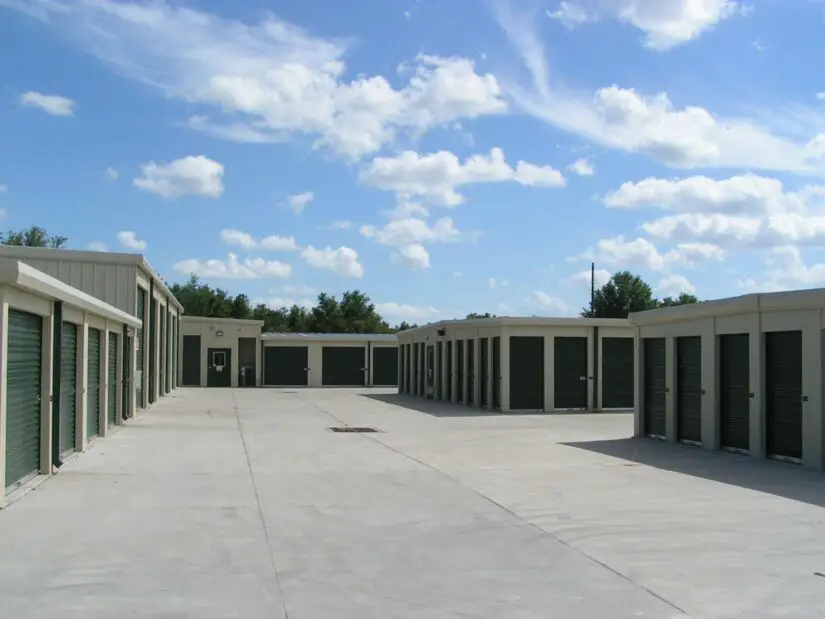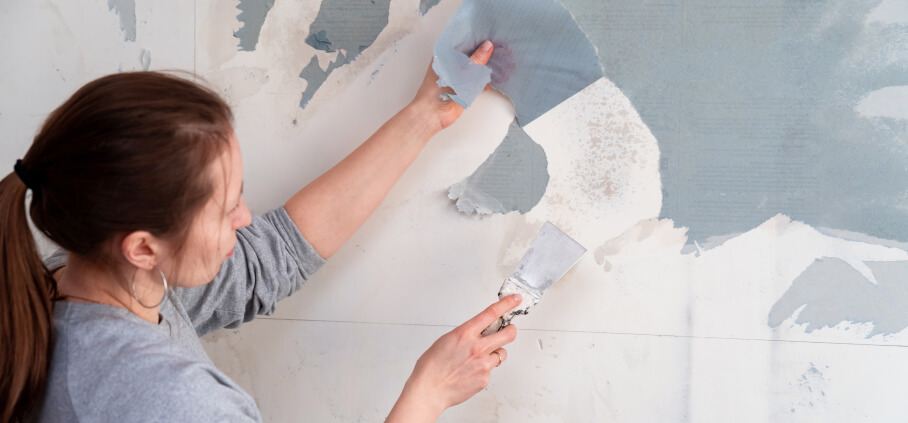You’ve likely spent a good deal of time inside over the past year. We all have. As a result, you’re probably more aware now than ever before of all the things big and small that you’d like to change about your home.
Given that you might not want workers roaming around your house, or perhaps out of a desire to learn a new set of skills, you may want to give these projects a shot yourself; however, if it’s your first time taking on a home improvement project, the prospect can be daunting. Are you up for it? Are you worried that you might miss something important along the way?
The following six tips will help you to make sure that you’ll be able to see the project through from start to finish—and that you haven’t bitten off more than you can chew.
Figure out what you can do
Do you already have the skills that you need to take this task on? If not, are you really interested in learning? Make sure that you’ve set realistic expectations for your abilities as well, because plenty of home renovation shows use editing tricks—like skipping over any problem areas—to get that perfect result in 30 minutes or less. (1)
If you want to learn how to do something new, but want to make sure that you do it right, you might consider hiring a contractor to consult. Not all will be willing to do it, as the practice can be controversial, but some contractors are happy to spend a few hours (and charge accordingly) to coach you through some basic work. (2)
Speaking with This Old House, Ted Welch, a Chicago-based builder, says that the clients best-suited for this approach are those, “who have good manual dexterity, who realize that skills need to be practiced in order to be perfected, and who are willing to risk making a few mistakes and then learn from them.” (2)
If you want to learn a new skill, and you’ve already got some DIY know-how, you might consider picking up something a bit more advanced, such as carpentry or welding. These will take time and training to master, but could become new hobbies in their own right. Plus, you can get a feel for whether they’re right for you or not by checking out the available resources. If you’re interested in welding, for example, there are resources online that can help (such as this one: https://weldingheadquarters.com/what-can-i-weld-with-a-70-amp-arc-welder/)
Make sure it’s worth the time and effort
Once you have an idea of what you’re able to do, or what you’re willing to learn how to do, you still need to answer a critical question: is this particular project something that you can and should take on yourself?
The first thing to consider on that front is how much time and effort it will take. You can use a tool like this one to determine how much an hour of your time is “worth,” and then you can figure out whether or not it’s more cost-effective to hire a professional. (3)
Realistic expectations are also a must: if you’ve only got one weekend, you don’t have time to refinish your floors, but you might have time to paint a room or to spruce up your basement. Plus, if it’s something that you could do, but it would take you four days (and a professional four hours), consider the convenience of having your shower back versus insisting on retiling it yourself (that’s probably a job best left to a professional anyway). (3)
Make sure it’s not dangerous to you
Here’s an obvious tip that’s worth repeating: don’t take on something that will endanger you, or risk making your home unsafe. (3)
Here are some jobs best left to a professional:
Fixing a gas appliance
Everything is turned off, and you’ve installed your new stove. But did you do as good a job on the install as you did on the removal? If not, then you could be facing a real risk of carbon monoxide poisoning—not worth it.
Repairing the roof
If you don’t have appropriate training, then don’t fix your roof. It’s easy to fall off, and safe to say that nobody wants that. If you do a poor job, you could also end up with a leaky roof and more expensive problems to clean up after.
Removing asbestos
For those who don’t know, asbestos is a mineral that occurs naturally. It has some properties—it’s resistant to heat and electricity and is a good barrier to sound—that led to its use in many older homes. It’s also toxic, and exposure when removing it can cause all kinds of problems, not just for you but for your neighbors as well. There are people who remove it professionally for a reason, so don’t try to do it yourself.
Electrical repairs
If you don’t have training working with electrical systems, this will likely be a no-go. The possible danger for you is high, and if you mess up the job, it could pose a risk down the line.
Plumbing repairs
If you do this wrong, which is easy enough, water will get out. That will certainly harm your home, and it may well harm you, since mold is a real health hazard. Some jobs will be fine for a DIYer with some experience, say installing a new toilet, but be sure to have a realistic view of what you can and can’t do here. (4)
Make sure it’s not dangerous for your home
Related to, but different from, the tip above: you should also assess how hard it would be for someone to clean up after you if you mess up the job. Some of the repairs listed above fall into this category too, like roofing, electrical, and plumbing. It’s also a reason to stay away from messing with load bearing walls, for example. (3)
This could also be a reason to skip jobs that are time intensive, but easy to botch. Say that you refinish your floors and then track some sand all over them, or you retile a surface just slightly off. Those are expensive fixes, and you could have saved yourself time and hassle by hiring someone else to do them in the first place. (3)

Do you have everything you need?
Once you’ve ruled out repairs that are too risky, or that you don’t have the know-how to tackle, you still have a few questions you’ll need to ask yourself:
Do you understand all the necessary steps to do the job?
It’s all well and good to take on a project, but if you don’t have a clear understanding of the task in front of you, you’ll be more likely to miss important steps, or to encounter unpleasant surprises.
Do you have all the tools you’ll need?
Understanding all the steps that you’ll need to take will also make clear what tools you’ll need. If there’s something you don’t have, figure out how to rent or borrow it, and make sure that you know how to use it.
Do you really have the skills necessary to do this project (be honest)?
This is the time for some brutal honesty: can you really do this task? Challenging yourself is good, but taking on something that you can’t reasonably expect yourself to accomplish has a lot of negatives and not too many positives.
What happens if something goes wrong?
Make sure that you have a plan for what you’ll do if something goes wrong. Fixing a job that needs redoing may cost more in both money and effort—and some people will be unwilling to take it on—so make sure that you’ve got contingency plans in place if you end up running into any roadblocks. (3)
Start small
What “small” means will vary based on your experience level, but it’s a good plan no matter what. Make sure that you’re ready to deal with DIY jobs by taking them on bit by bit, starting with something that you can manage in a short time frame. As you get more of a sense of how much time you should dedicate to these tasks, and how much of a challenge you’re able to take on, you can start to expand the scope of your work. If you start on the small end, you’re less likely to take on something that overwhelms you, leading you to giving up on doing your own home improvements altogether. (3)
Final thoughts
If you’re still interested—and you should be, as doing your own home improvements can be enormously satisfying—you should try to figure out what jobs you can reasonably take on yourself, with all the new information above. If you plan what needs to be done, take a look at the resources that you have at your disposal (time, money, and ability), and weigh the benefits against the risks to yourself and your property, you’ll set yourself up for DIY success.
Living and working in a home that you know you helped to make better is a hard feeling to achieve any other way. Don’t blow it by having unrealistic expectations at the start. You’ll gain more experience over time, and soon those projects that seem daunting will be checked off of your to-do list for good.






